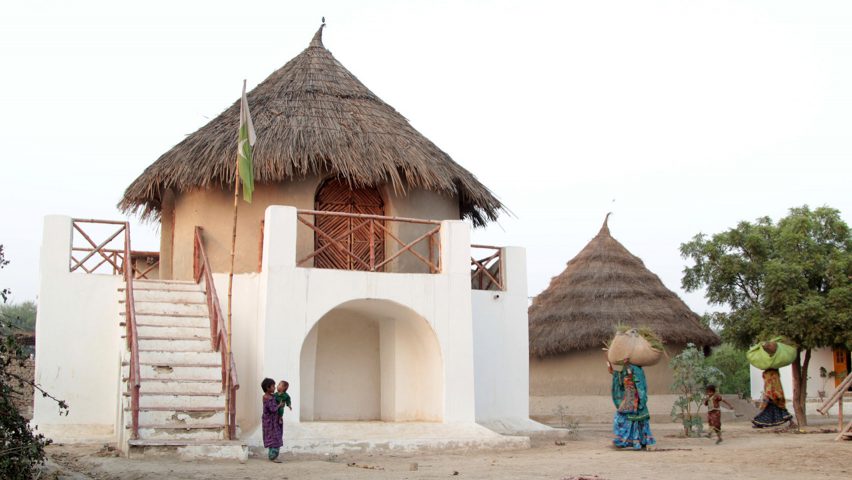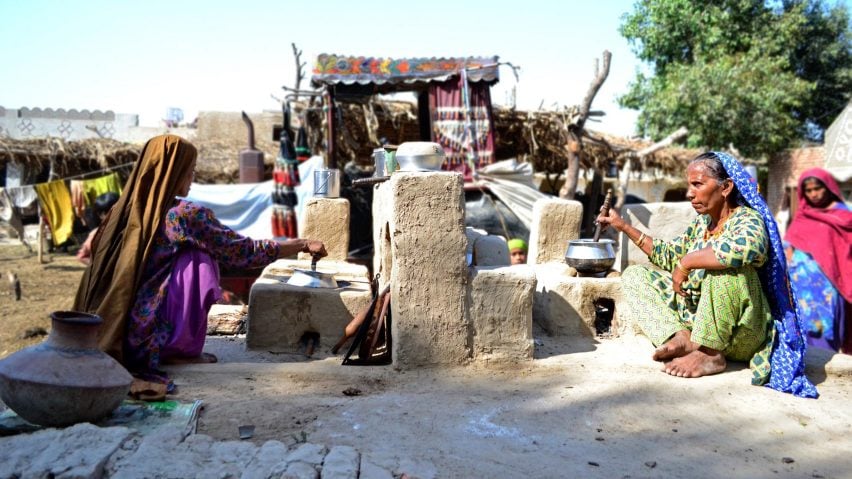
"We need to do away with the prevalent colonial mindset and the desire to create imposing megastructures" says Yasmeen Lari
Architect Yasmeen Lari calls for a form of low-impact architecture that benefits disadvantaged people in her manifesto written for the Dezeen 15 digital festival.
"The disadvantaged and those that live on the margins need more, not less, design to achieve a better quality of life," writes Lari, who champions what she calls "barefoot social architecture" in her native Pakistan.
"We need to do away with the prevalent colonial mindset and the desire to create imposing megastructures," writes Lari, who previously worked as a commercial architect but now dedicates her time to developing low-carbon projects, including housing schemes for victims of natural disasters.
"Moving forward, we must all stand for a humanistic, inclusive architecture that is driven by environmental considerations, that treads lightly on the planet and responds to the needs of the majority," she writes.
"I would like to see a new activism among architects," she adds.
Alongside her manifesto, Dezeen is publishing a range of Lari's projects that demonstrate her "barefoot" approach to architecture.
The Dezeen 15 festival features 15 manifestos presenting ideas that can change the world over the next 15 years. Each contributor will also take part in a live video interview.
See the line-up of contributors here and watch Lari's video interview live on Dezeen later today.

Social and Ecological Architecture for Humanity
We live in an era that is beset with fragmentation and disruptions; our world is ravaged by rising poverty levels, increasing disparities, resource depletion and climate change, together with the impact of Covid-19.
In this new world disorder, how can we continue to design only for the privileged one per cent who have acquired the most wealth?
Greenhouse gas emissions, recurring disasters, climate emergencies and consequent climate-change-migrants, conflict-impelled refugees, the displaced and the homeless – all these require innovative design solutions.
Under such challenging circumstances, when many countries in the world are unable to meet the United Nations' Sustainable Development Goals, it is the power of design that is in demand for serving the other 99 per cent. We need to remind ourselves that it is not only the privileged who have a right to enjoy well-designed environments. The disadvantaged and those that live on the margins need more, not less, design to achieve a better quality of life.
We must develop a framework for a changed direction in architecture
We must develop a framework for a changed direction in architecture. We need to do away with the prevalent colonial mindset and the desire to create imposing megastructures, which have traditionally been commissioned by the likes of the Medici family of Florence, the robber barons of the East India Company, the merchant princes of the industrial revolution, and present-day exploitative multinationals that promote wasteful high-carbon methodologies and highly consumptive modes of living.
I want us to reset concepts to deal with the new normal – to fashion an equitable world by democratising architecture, promoting community participation, co-building and co-creation, in order to help stitch the frayed tapestry of the earth; to take the lead in the use of sustainable, locally sourced materials; to incorporate attributes drawn from tradition and heritage; and to pursue carbon-neutral, circular-economy principles that would provide both social and ecological justice through architectural design.
Using such concepts, I have carried out large-scale projects in Pakistan, building over 50,000 zero-carbon, one-room houses and 70,000 zero-carbon fuel-efficient stoves along with scores of zero-carbon toilets, which have benefitted 840,000 persons over five years.
I have demonstrated the value of well-designed and affordable zero- and low-carbon structures using local green materials such as earth, lime and bamboo. Thus providing disaster risk reduction (DRR) compliance as well as dignified living for marginalised sections of society.
It is the three Ls (the least use of water, the least waste stream and the least use of energy) that can show us the right direction; and the three zeros (zero cost, zero carbon and zero waste) that can provide a path to zero poverty for the disadvantaged.
We must all stand for a humanistic, inclusive architecture that is driven by environmental considerations
I would like to see a new activism among architects for the adoption of innovative approaches such as degrowth, transition design as well as Barefoot Social Architecture, a stratagem that we devised to maximize the barefoot ecosystem for the empowerment of those living on the fringes, thus ensuring the well-being of humankind as well as our planet.
Barefoot Social Architecture fosters rights-based development providing shelter, sanitation, clean food and water at one-quarter of the usual cost through a process of self-building and co-creation. Its four tenets consist firstly of the Three Zeros as well as Zero Charity to provide self-worth and self-reliance among the poorest of the poor.
Secondly, it provides social and ecological justice through humanistic architecture fostering pride, dignity and well being and preventing depletion of the planet’s resources.
Thirdly, it delivers unmet needs of marginalized sections by training them as Barefoot Entrepreneurs through the Incubator for Social Good and Environmental Sustainability, which would help provide access to affordable products for people at the bottom of the pyramid.
Fourthly, it constructs well-designed non-engineered structures for shrinking the ecological footprint of buildings using green skills and locally sourced green materials.
Moving forward, we must all stand for a humanistic, inclusive architecture that is driven by environmental considerations, that treads lightly on the planet and responds to the needs of the majority – the vulnerable masses who have not been considered worthy of attention by architects but who can no longer be ignored in a global village where Covid-19 has blurred distinctions and equalized humanity.

Yasmeen Lari was the first Pakistani woman to qualify as an architect. Though she closed her practice in 2000, she continues to advocate "barefoot social architecture" and has built thousands of low-cost homes through the Heritage Foundation of Pakistan, a non-profit organisation she cofounded.
Find out more about Yasmeen Lari ›